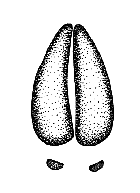|
|
|
Badger Beaver Bighorn Mountain Sheep Black Bear Bobcat California Sea Lion Caribou Chipmunk Cougar Coyote Dall's Porpoise Deer Elk Grey Whale Grey Wolf Grizzly Bear Humpback Whale Killer Whale Lynx Marmot Marten Mink Mountain Goat Moose Pacific White-Sided Dolphin Porcupine Raccoon Red Fox Red Squirrel Sea Otter Striped Skunk Wolverine Animals Birds Fish Wildflowers Trees Survival Parks Trails |
British Columbia Outdoor Wilderness Guide
|
 Follow Us On Facebook List of BC Adventure Advertisers Site Info
Advertise With UsAwards About Us Contact Us Free Vacation Guides
BC Vacation GuidesCoastal Vacations Thompson Okanagan EcoTourism Fishing Vacations Guest Ranch Guide Romantic Getaways Wilderness Vacations Winter Vacations The Rockies Guide Login |
|||||
|
|||||||

